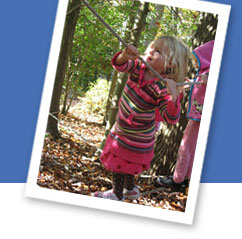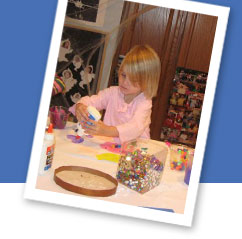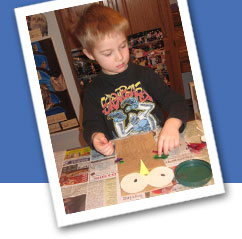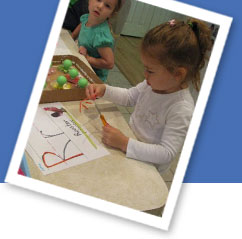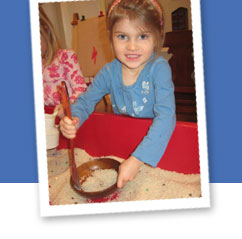Philosophy: Draw from Montessori, Reggio Emilia, nature education and multiple intelligence theories
Best Beginning emphasizes learning through purposeful play. This includes
- building with blocks
- dressing up
- artistic endeavours
- experimenting at the sensory table
- exploring the natural world

Best Beginning also encourages learning practical and academic skills through the use of Montessori materials such as the 100's board, work with sandpaper letters and numbers, color mixing, hammering, pouring water and setting the table for snack. Weather permitting, outdoor play is an essential part of a child's experience here. Children climb on the low ropes course, ride the child-sized zip line, pedal tricycles, play hide and seek or paint at an easel.
Curriculum

Best Beginning is a best practices preschool. This means we pull from many of the best known educational theories to create a unique program for children. We use a nature education curriculum in addition to including many activities and materials from Montessori, Reggio Emilia and Howard Gardner's multiple intelligence theories. We believe that children learn the most while having fun, experiencing topics directly and learning about topics that interest and motivate them individually.
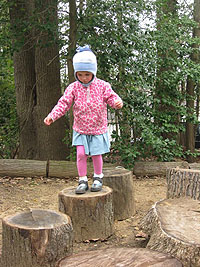
Our emphasis on Nature Education is supported through the use of the Vermont Insitute of Natural Science's Small Wonders preschool curriculum.
Read Stef's article: Choosing a Preschool -- What Does the Jargon Mean?
Find out about Richard Louv's Last Child in the Woods: Saving Our Children from Nature-Deficit Disorder.
Areas of focus

At Best Beginning, children learn through themes that rotate weekly or biweekly. The themes are organized into multidisciplinary areas such as:
- early reading
- language development
- fine motor
- art
- music & movement
- math
- science
- sensory
- cooking activities
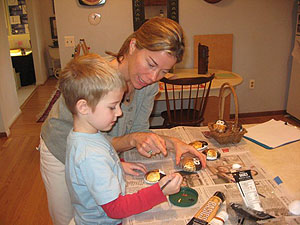
Lessons are developed to include skills in observation, noting similarities and differences, sorting and classifying.
School readiness skills such as listening, cooperative learning, letter and number recognition, and following directions are also emphasized.
Development of a child's social abilities is always a focus. We place particular emphasis on learning to ask for a turn, giving children strategies for sharing, practicing politeness and learning to advocate for oneself in a positive way.

Attention is given to each child's learning style and care is taken to present information through different modalities such as visual, oral, tactile and kinesthetic. Children experience directed learning activities as well as open ended more creative learning. Themes are teacher chosen or inspired by the children themselves.
During the day, students engage in activities that are of intrinsic interest to them. We also come together for two group times per class. Group time includes music, movement, games, and storytelling. It also includes discussion and introduction to themes and materials.
In the past, some themes for the school have included:
- Butterfly Buddies
- All about Apples
- Bats and Beyond
- The Arctic
- Marvelous Me
- Fish Week
- Circle of the Sun (planets and moon)
- Winter and Life Underground
- Get Growing!
- Fire safety
- Bears and hibernation
- Chinese New Year
- Friendship and Valentines Day
- Wild about water
- Animal tracks
- Pet week
- Guide dogs for the blind/differences
- Animals that hatch from eggs (hatching live chicks)
Celebrations and Special Activities

- OOO-La-La parties to celebrate kindness in our school
- Pajama Day
- Holiday Sing Along
- Beginning of the year Beach Party
- End of the year Beach Party
- Date Night -- bring your child here, you go have some fun!
- Pet Week -- students’ pets came to visit
- Hatching chicks from eggs
- Growing frogs from tadpoles
